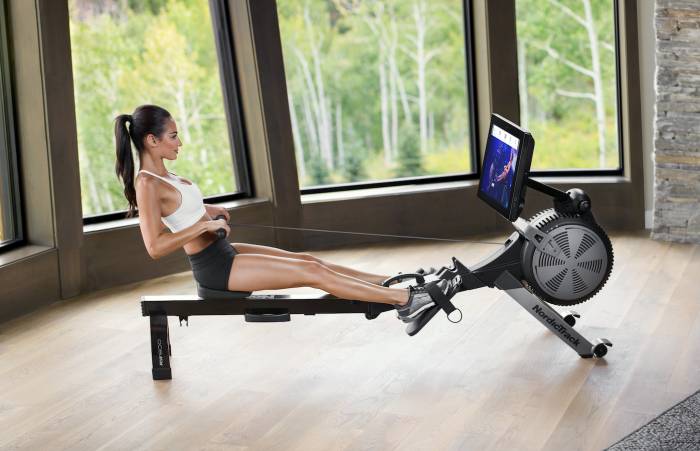If you’ve been on a quest to upgrade your home gym or are simply looking to step into the world of at-home workouts, you might’ve stumbled upon one of the most efficient and effective workout machines out there – the rowing machine.
Rowing machines have gained a lot of steam (and I don’t mean the sauna kind) in recent years. The once-overlooked piece of equipment has made quite the splash (pun intended!) in the fitness world, for good reason. These magical devices provide an excellent all-around workout, hitting nearly every major muscle group while offering cardio, strength, and endurance training all in one go. Plus, they’re pretty fun to use!
Now, owning a rowing machine can be a game-changer for your fitness regimen. It provides the convenience of exercising at home and saves you from the weather’s whims or the crowded gym rush hours. The benefits are clear, but here’s the real question – how do you pick the right one?
The Importance of Choosing the Right Rowing Machine
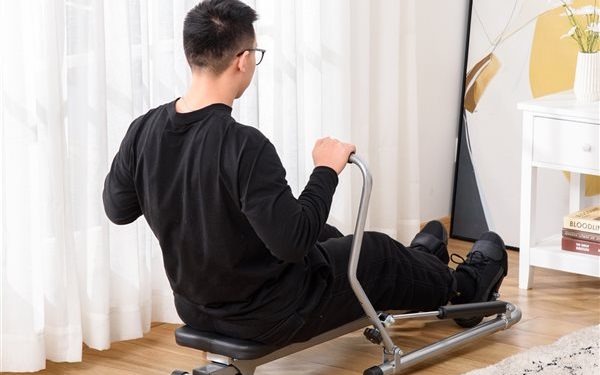
This is where things can get a bit, well, turbulent. Choosing the right rowing machine can make your fitness journey smooth sailing, with the wind at your back and nothing but open water ahead. A machine that suits your needs will keep you motivated, help you achieve your fitness goals faster, and make the whole workout experience enjoyable. On the flip side, pick the wrong one, and you might be looking at a frustrating journey filled with discomfort or, worse, potential injuries.
Consider the rowing machine as an investment in your health and wellness. Therefore, it’s crucial to make the right choice from the get-go. You don’t want to end up with a device that just collects dust in the corner or becomes a fancy clothes rack. Trust me, I’ve been there, and it’s not pretty.
So, what are the key factors to consider when buying a rowing machine? Grab your oars, folks; we’re about to row through this together! Stay tuned, as in the next sections, we’re going to delve deeper into these factors and help you make the best choice for your fitness journey.
Up next, we’ll explore the world of rowing machine resistance types. Do you prefer the soothing swoosh of water resistance, or are you more of a fan of the consistent pull from a magnetic model? We’ve got you covered!
Keep rowing, folks, and remember, we’re all in the same boat when it comes to our fitness journey. Let’s make sure we’ve got the best equipment to keep us afloat!
Factor 1: Type of Resistance
As we dive deeper into our rowing journey, the first major factor to consider is the type of resistance. Resistance is the force you’ll be working against while rowing. It’s what makes your muscles burn and heart pump, making you feel like you’re really rowing across those metaphorical fitness waters.
There are primarily four types of resistance in rowing machines: air, magnetic, water, and hydraulic. Each comes with its unique feel, and understanding these can help you choose the one that suits you best.
Air Resistance
Air resistance rowers generate resistance through a flywheel. When you pull the handle, the flywheel spins, and the air provides the resistance. The faster you row, the more resistance you’ll feel. These are commonly used in gyms and offer a smooth, natural rowing feel but can be a bit noisy.
Magnetic Resistance
Magnetic resistance rowers use magnets to create resistance. The beauty of this type lies in its quiet operation and the ability to adjust resistance levels manually, providing a consistent and predictable rowing experience.
Water Resistance
Water resistance rowers are as close as it gets to real rowing. They use paddles in a water-filled tank to create resistance. The resistance increases with the speed of your rowing, similar to air rowers, but with the added aesthetic and sound of water swooshing. It’s like having a piece of the lake right in your living room!
Hydraulic Resistance
Hydraulic resistance rowers use cylinders filled with oil to create resistance. These machines are typically compact and budget-friendly. They’re less smooth than other types and may not provide a true rowing feel, but they can be a great start for beginners.
Consider your fitness goals, the noise level you’re comfortable with, and even the feeling you prefer when you row. It’s all about what feels right to you.
Factor 2: Size and Space
Once you’ve got the resistance down, it’s time to consider your space. Rowing machines come in various sizes, and choosing one that fits comfortably in your workout space is crucial. You don’t want a rower that cramps your style or, worse, your living room!
Start by measuring your available space. Don’t forget to consider the extra space you’ll need for getting on and off the machine and room for your body to extend during workouts. And remember, it’s not just about the length and width; height is crucial too, especially for taller individuals.
Foldable rowers can be a fantastic option if space is limited. They’re designed to be folded up and stored away when not in use, which can save you a lot of space. However, they might not offer the same level of stability and smoothness as non-foldable ones.
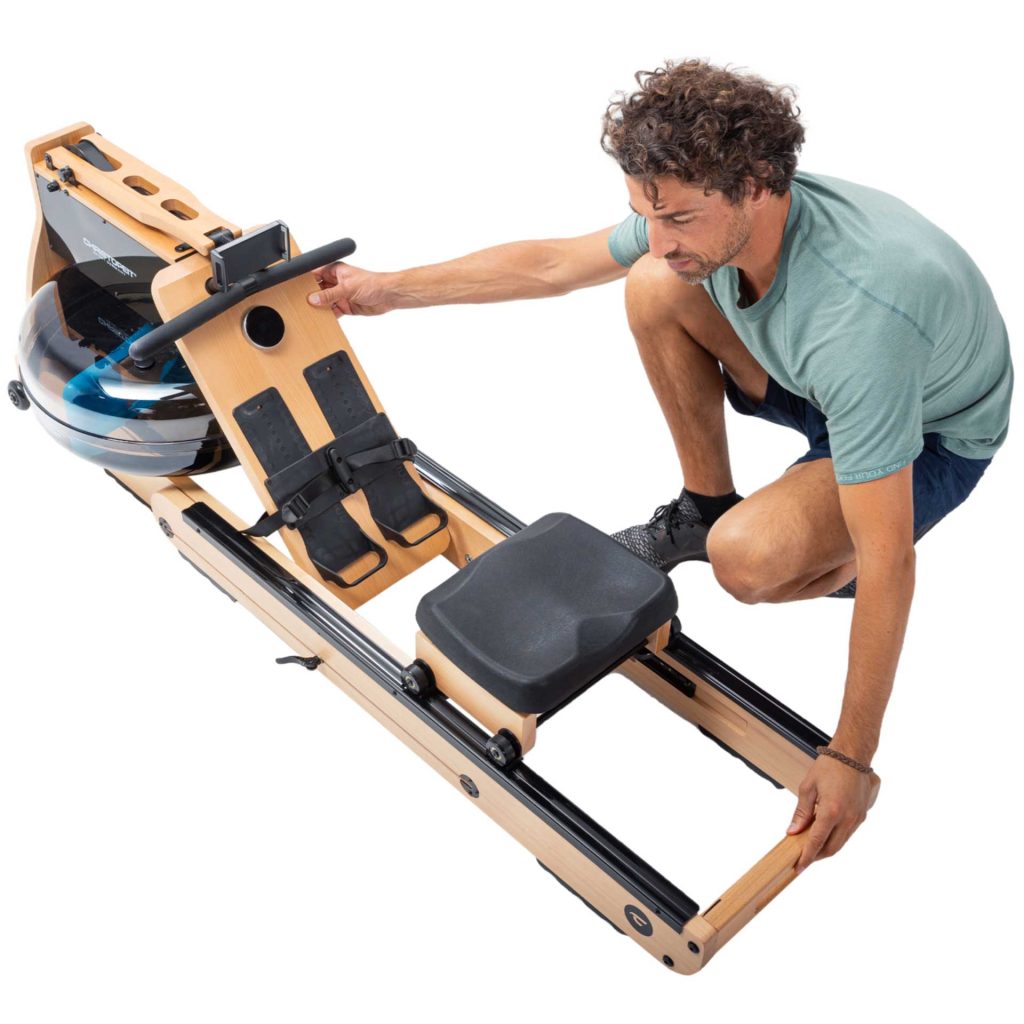
Choosing the right rowing machine might seem like navigating rough waters, but by considering these factors, you’re well on your way to smooth sailing. Up next, we’ll talk about the importance of comfort and ergonomics in rowing machines. After all, we want our fitness journey to be a comfortable one! Stay tuned, folks, and keep those oars ready.
Factor 3: Comfort and Ergonomics
Having set our course with the right type of resistance and ensured there’s enough space on deck, let’s now turn our attention to something equally important: comfort and ergonomics.
Comfort might seem like a luxury in the fitness world, where ‘no pain, no gain’ is often the mantra. However, when it comes to rowing machines, discomfort is the last thing you want. Remember, you’ll be spending quite some time on this machine, and discomfort can quickly turn a fantastic workout into a literal pain.
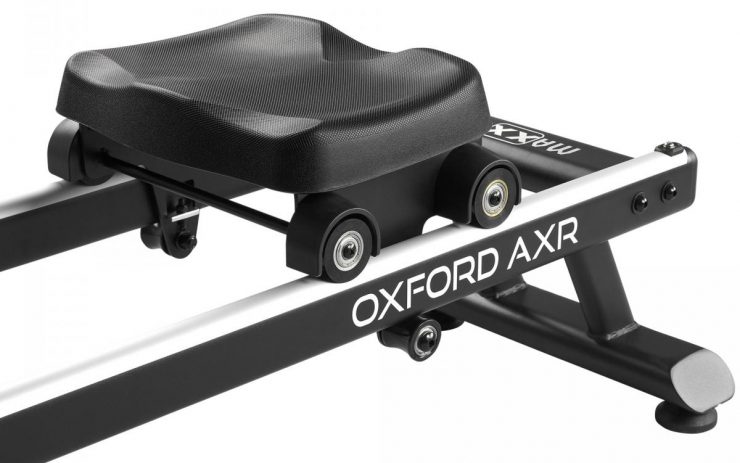
The seat is where you’ll spend your time, so make sure it’s comfortable. It should be well-padded, have the right size for your body, and maybe even a little contouring for a better fit. You’re looking for a Goldilocks’ porridge situation here – not too hard, not too soft, but just right!
The handle grip also plays a significant role in comfort. You’ll be gripping these handles throughout your workout, so they should have a comfortable grip, ideally non-slip, and a diameter that fits your hand size.
Don’t forget the footrests! These should be adjustable to accommodate different shoe sizes and securely hold your feet during the workout.
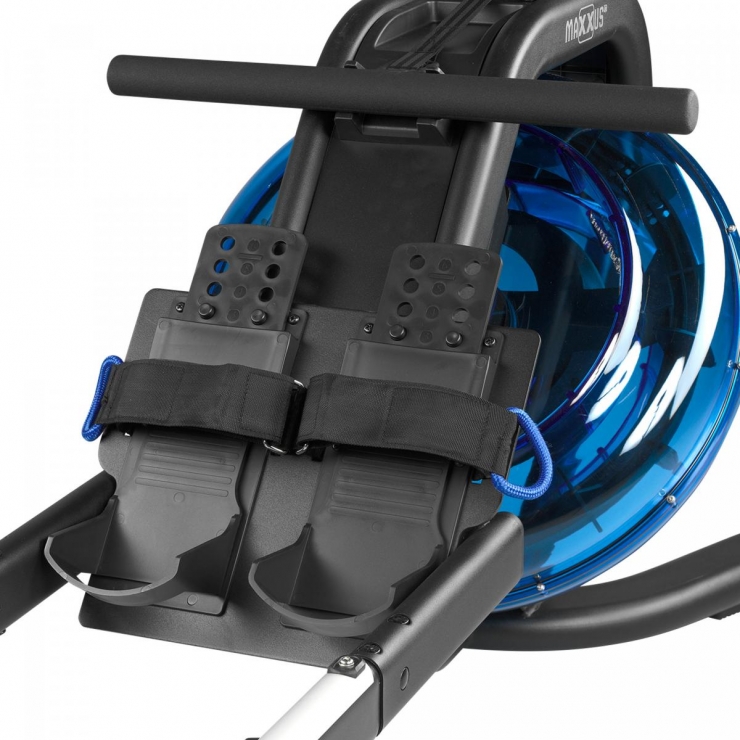
The right ergonomic design helps maintain good posture during the workout, reducing the risk of injuries and ensuring you’re targeting the right muscle groups. Remember, a good rowing machine is one that works with your body, not against it!
Factor 4: Build Quality and Durability
As you row towards the horizon of your fitness goals, you’ll want a vessel that’s built to last. And in the world of rowing machines, build quality and durability are of paramount importance.
In most cases, you get what you pay for. Higher-end rowing machines typically come with a robust frame, durable components, and a longer warranty – all hallmarks of quality. They might cost a little more upfront, but consider it an investment in your fitness voyage.
On the other hand, lower-end models might be light on the wallet, but they may not withstand the rigors of intense workouts over time. It’s better to row steadily with a machine that’s built to last than to be stranded mid-journey with a broken oar!
A solid frame ensures the machine remains stable, even during high-intensity workouts. Pay attention to the materials used; steel frames are usually a good bet. And remember, a good warranty is not just a safety net; it’s a statement of confidence from the manufacturer in their product.
When charting your course in the world of rowing machines, ensuring comfort and durability will make your journey smoother and more enjoyable. Up next, we’ll be navigating through the high-tech seas of user interfaces and technology. Stay rowing, folks! The end of the journey is in sight!
Factor 5: User Interface and Technology
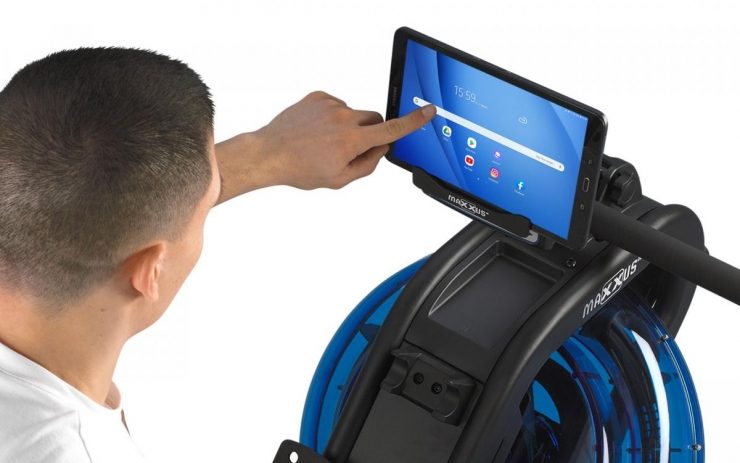
As we navigate the waters of the modern fitness world, it’s impossible to ignore the wave of technology that’s shaping our workout routines. From tracking our progress to providing immersive workout experiences, technology plays a crucial role in our fitness journey, and rowing machines are no exception.
Most modern rowing machines come equipped with an LCD display that acts as your coxswain, guiding you through your workouts. These displays show essential workout stats like time, distance, strokes per minute, and calories burned. Having this information at your fingertips can greatly enhance your workout experience, keeping you informed and motivated.
With advancements in technology, many rowing machines now offer connectivity features like Bluetooth and Wi-Fi. This opens up a sea of possibilities for your workouts. You can connect your machine to fitness apps, sync your data, and track your progress over time. This is incredibly helpful in setting and achieving your fitness goals.
Speaking of fitness apps, platforms like Kinomap and Zwift have revolutionized home workouts. They offer interactive experiences, such as simulated races and routes, making your workouts more fun and engaging. Imagine rowing through the canals of Venice or competing against other rowers worldwide, all from the comfort of your home. It’s virtually an adventure!
Factor 6: Price and Budget
Now that we’ve explored the features let’s talk about the investment. Rowing machines come in a broad price range, from budget-friendly models under $300 to high-end models that can reach over $2000. Your budget will likely play a significant role in deciding which machine you end up with.
Remember, you’re not just buying a machine; you’re investing in your health, wellness, and quality of life. While it’s essential to consider your budget, you shouldn’t compromise on key features that will impact your workout experience and the machine’s longevity.
If you’re a beginner or don’t intend to use the rowing machine heavily, a budget or mid-range model might serve you well. However, if you’re a serious fitness enthusiast or plan on heavy usage, investing in a higher-end model could be more beneficial in the long run.
Balancing your budget with your requirements and preferences might seem like a daunting task, but remember, it’s all about finding what works best for you. Consider all the factors we’ve discussed so far: the type of resistance, size, space, comfort, ergonomics, build quality, and tech features. All of these should play into your decision-making process.
As we row towards the final factor, remember choosing the right rowing machine is about finding the perfect balance for your unique needs. Up next, we’ll discuss the importance of user reviews and ratings. Stay tuned, and keep those oars ready!
Factor 7: User Reviews and Ratings
Navigating through all the factors we’ve discussed, there’s one source of guidance that can provide invaluable insights – other users. User reviews and ratings can offer a glimpse into the real-world performance of a rowing machine. They’re like signals from fellow rowers who’ve already charted the course you’re about to embark on.
User reviews can reveal aspects of the machine that aren’t apparent from product descriptions or spec sheets. They can shed light on the machine’s ease of assembly, noise level, real-world durability, and overall user satisfaction. You’ll also get insights on any potential issues or quirks the machine might have.
There are plenty of platforms where you can find user reviews, including Google Reviews, TrustedShops, and Amazon. It’s wise to read reviews from multiple sources to get a balanced view.
Rowing Towards the Finish Line
And there you have it, folks! We’ve navigated through the vast ocean of factors to consider when buying a rowing machine, from the type of resistance to user reviews and everything in between.
Just to recap, here’s what we’ve learned on our journey:
- The type of resistance determines the feel of your rowing workout.
- Consider the size and space to ensure your machine fits comfortably in your workout area.
- The comfort and ergonomics of the rower can significantly affect your workout experience.
- A machine’s build quality and durability are crucial for long-term use.
- User interface and technology can enhance your workouts, making them more efficient and enjoyable.
- The price and budget you have will guide you to the right machine for your needs.
- Reading user reviews and ratings can provide valuable insights into the machine’s real-world performance.
Remember, choosing the right rowing machine is a personal journey. It’s about finding a machine that matches your fitness goals, preferences, space, budget, and even your personality! It’s an investment in your health, wellness, and fitness journey, so take your time to consider all these factors before making your purchase.
We hope this guide helps you navigate the exciting waters of buying a rowing machine. Remember, the goal is to make your fitness journey enjoyable, effective, and sustainable. So, pick the right rowing machine and start rowing toward your fitness goals. Keep rowing, folks!
